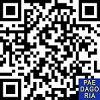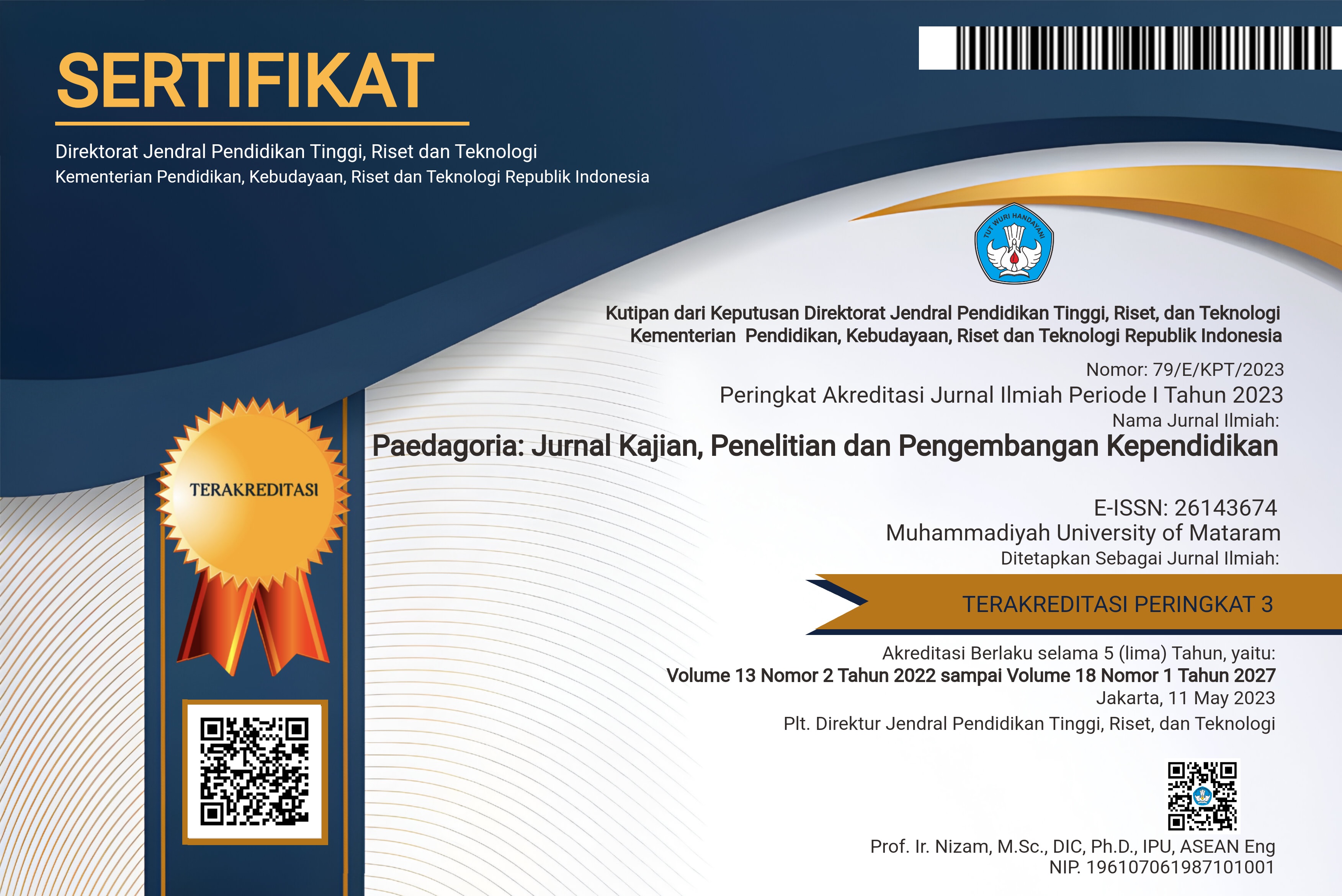Unravelling the Drivers of Digital Literacy in Indonesia’s Distance Learning Era
Abstract
In Indonesia’s rapidly evolving distance learning landscape, digital literacy has become a critical competency for ensuring academic quality and ethical online engagement. However, existing assessments often focus narrowly on technical skills, overlooking behavioral and ethical dimensions that are equally essential in digital environments. This study aims to identify the key factors influencing digital literacy among students in Indonesia's distance learning environment, focusing on Universitas Terbuka. Utilizing a Random Forest algorithm, the research involves data preprocessing, model development and evaluation, and feature importance analysis to determine the most influential predictors. The findings reveal that digital ethics and behavioral aspects-such as academic integrity, proper citation practices, and responsible social media conduct- are the strongest indicators of digital literacy, whereas technical proficiency in e-learning platforms plays a less dominant role. This study's novel use of Machine Learning offers a methodological contribution to the assessment of digital literacy in educational settings. Based on these insights, the paper recommends a holistic approach to digital literacy education at Universitas Terbuka, advocating for programs that integrate technical training with robust digital ethics instruction, including awareness of citation, plagiarism, communication etiquette, privacy, and responsible information dissemination.
Keywords
Full Text:
PDFReferences
Audrin, C., & Audrin, B. (2022). Key factors in digital literacy in learning and education: a systematic literature review using text mining. Education and Information Technologies, 27(6). https://doi.org/10.1007/s10639-021-10832-5
Azhari, B., & Fajri, I. (2022). Distance learning during the COVID-19 pandemic: School closure in Indonesia. International Journal of Mathematical Education in Science and Technology, 53(7). https://doi.org/10.1080/0020739X.2021.1875072
Churiyah, M., Sholikhan, S., Filianti, F., & Sakdiyyah, D. A. (2020). Indonesia Education Readiness Conducting Distance Learning in Covid-19 Pandemic Situation. International Journal of Multicultural and Multireligious Understanding, 7(6). https://doi.org/10.18415/ijmmu.v7i6.1833
Dziubaniuk, O., Ivanova-Gongne, M., & Nyholm, M. (2023). Learning and teaching sustainable business in the digital era: a connectivism theory approach. International Journal of Educational Technology in Higher Education, 20(1). https://doi.org/10.1186/s41239-023-00390-w
Elnaffar, S. S., & Fawey, M. (2024). Uncovering the Most Effective Pedagogical Techniques for Math Education Using Machine Learning. JOIV: International Journal on Informatics Visualization, 8(3–2), 1671–1677.
Hatwell, J., Gaber, M. M., & Azad, R. M. A. (2020). CHIRPS: Explaining random forest classification. Artificial Intelligence Review, 53(8). https://doi.org/10.1007/s10462-020-09833-6
Hidayah, S. (2022). Online Learning during the Pandemic in Indonesia: A Case Study on Digital Divide and Sociality among Students. Jurnal Humaniora, 34(2). https://doi.org/10.22146/jh.72605
Hwang, G.-J., & Tu, Y.-F. (2021). Roles and research trends of artificial intelligence in mathematics education: A bibliometric mapping analysis and systematic review. Mathematics, 9(6), 584.
Kabakus, A. K., Bahcekapili, E., & Ayaz, A. (2023). The effect of digital literacy on technology acceptance: An evaluation on administrative staff in higher education. Journal of Information Science. https://doi.org/10.1177/01655515231160028
Kharis, S. A. A., Arisanty, M., Permatasari, M., Robiansyah, A., & Sukatmi, S. (2025). Exploration of The Digital Literacy Level of New Students in Open and Distance Learning. Paedagoria : Jurnal Kajian, Penelitian Dan Pengembangan Kependidikan, 16(2), 259–266. https://doi.org/10.31764
Li, M., & Yu, Z. (2022). Teachers’ Satisfaction, Role, and Digital Literacy during the COVID-19 Pandemic. In Sustainability (Switzerland) (Vol. 14, Issue 3). https://doi.org/10.3390/su14031121
Masudah, L. (2021). Kompetensi Pendidik Dalam Menghadapi Tantangan Pembelajaran Pai Pada Masa Belajar Dari Rumah. Attaqwa: Jurnal Ilmu Pendidikan Islam, 17(1).
Moore, J. L., Dickson-Deane, C., & Galyen, K. (2011). e-Learning, online learning, and distance learning environments: Are they the same? The Internet and Higher Education, 14(2), 129–135. https://doi.org/10.1016/J.IHEDUC.2010.10.001
Nadzir, M. M., & Bakar, J. A. (2023). A digital literacy predictive model in the context of distance education. Journal of ICT in Education, 10(1), 118–134.
Nurwardani, P., Ahmad, M. Y., & Handayani, T. (2024). Identifikasi Status Literasi Digital Pada Mahasiswa Universitas Suryakancana Tahun 2022. Jurnal Administrasi Bisnis (JUBIS), 4(1), 35. https://doi.org/10.35194/jubis.v4i1.4318
Permatasari, M., Kharis, A. A., Arisanty, M., Robiansyah, A., & Zubir, E. (2025). Validity and Reliability Testing of Student Digital Literacy Instrument in Distance Education. In Science and Technology ISST (Vol. 2024).
Purnama, S., Ulfah, M., Machali, I., Wibowo, A., & Narmaditya, B. S. (2021). Does digital literacy influence students’ online risk? Evidence from Covid-19. Heliyon, 7(6). https://doi.org/10.1016/j.heliyon.2021.e07406
Purwanto, A. D., Wikantika, K., Deliar, A., & Darmawan, S. (2023). Decision Tree and Random Forest Classification Algorithms for Mangrove Forest Mapping in Sembilang National Park, Indonesia. Remote Sensing, 15(1). https://doi.org/10.3390/rs15010016
Sari, G. I., Winasis, S., Pratiwi, I., & Nuryanto, U. W. (2024). Strengthening digital literacy in Indonesia: Collaboration, innovation, and sustainability education. Social Sciences & Humanities Open, 10, 101100.
Sari, W. J., Melyani, N. A., Arrazak, F., Anahar, M. A. Bin, Addini, E., Al-Sawaff, Z. H., & Manickam, S. (2024). Performance Comparison of Random Forest, Support Vector Machine and Neural Network in Health Classification of Stroke Patients. Public Research Journal of Engineering, Data Technology and Computer Science, 2(1), 34–43.
Schneider, S. L., & Council, M. L. (2021). Distance learning in the era of COVID-19. Archives of Dermatological Research, 313(5). https://doi.org/10.1007/s00403-020-02088-9
Sholihah, K., Anbiya, B. F., & Qonita, D. U. (2023). Online Learning: Tantangan dan Peluang Pasca Pandemi Covid-19. Research in Education and Technology (REGY), 1(2). https://doi.org/10.62590/regy.v1i2.84
Suni Astini, N. K. (2020). Tantangan Dan Peluang Pemanfaatan Teknologi Informasi Dalam Pembelajaran Online Masa Covid-19. Cetta: Jurnal Ilmu Pendidikan, 3(2). https://doi.org/10.37329/cetta.v3i2.452
Tejedor, S., Cervi, L., Pérez-Escoda, A., & Jumbo, F. T. (2020). Digital literacy and higher education during COVID-19 lockdown: Spain, Italy, and Ecuador. Publications, 8(4). https://doi.org/10.3390/publications8040048
Wang, J., & Zhang, W. (2020). Fuzzy mathematics and machine learning algorithms application in educational quality evaluation model. Journal of Intelligent & Fuzzy Systems, 39(4), 5583–5593.
DOI: https://doi.org/10.31764/paedagoria.v16i4.34482
Refbacks
- There are currently no refbacks.
Copyright (c) 2025 Selly Anastassia Amellia Kharis, Tri Wijayanti Septiarini, Arman Haqqi Anna Zili, Melisa Arisanty, Sri Maulidia Permatasari

This work is licensed under a Creative Commons Attribution-ShareAlike 4.0 International License.
Paedagoria : Jurnal Kajian, Penelitian dan Pengembangan Kependidikan
Fakultas Keguruan & Ilmu Pendidikan | Universitas Muhammadiyah Mataram.
_______________________________________________
 | Paedagoria : Jurnal Kajian, Penelitian dan Pengembangan Kependidikan |
______________________________________________
CURRENT INDEXING:
EDITORIAL OFFICE:


















